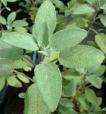
The history of herbology is inextricably intertwined with that of modern medicine. Many drugs listed as conventional medications were originally derived from plants. Salicylic acid, a precursor of aspirin, was originally derived from white willow bark and the meadowsweet plant. Cinchona bark is the source of malaria-fighting quinine. Vincristine, used to treat certain types of cancer, comes from periwinkle. The opium poppy yields morphine, codeine, and paregoric, a treatment for diarrhea Laudanum, a tincture of the opium poppy, was the favored tranquilizer in Victorian times. Even today, morphine-the most important alkaloid of the opium poppy-remains the standard against which new synthetic pain relieves are measured.
Prior to the discovery and subsequent synthesis of antibiotics, the herb echinacea (which comes from the plant commonly known as purple coneflower) was one of the most widely prescribed medicines in the United States. For centuries, herbalists prescribed echinacea to fight infection. Today, research confirms that the herb boosts the immune system by stimulating the production of disease-fighting white blood cells.
The use of plants as medicine is older than recorded history. As mute witness to this fact, marshmallow root, hyacinth, and yarrow have been found carefully tucked around the bones of a Stone Age man in Iraq. These three medicinal herbs continue to be used today. Marshmallow root is a demulcent herb, soothing to inflamed or irritated mucous membranes, such as a sore throat or irritated digestive tract. Hyacinth is a diuretic that encourages tissues to give up excess water. Yarrow is a time-honored cold and fever remedy that may once have been used much as aspirin is today.
In 2735 B.C., the Chinese emperor Shen Nung wrote an authoritative treatise on herbs that is still in use today. Shen Nung recommended the use of ma huang (known as ephedra in the Western world), for example, against respiratory distress. Ephedrine, extracted from ephedra, is widely used as a decongestant. You'll find it in its synthetic form, pseudoephedrine, in many allergy, sinus, and cold-relief medications produced by large pharmaceutical companies.
The records of King Hammurabi of Babylon (c. 1800 B.C.) include instructions for using medicinal plants. Hammurabi prescribed the use of mint for digestive disorders. Modern research has confirmed that peppermint does indeed relieve nausea and vomiting by mildly anesthetizing the lining of the stomach.
The entire Middle East has a rich history of herbal healing. There are texts surviving from the ancient cultures of Mesopotamia, Egypt, and India that describe and illustrate the use of many medicinal plant products, including castor oil, linseed oil, and white poppies. In the scriptural book of Ezekiel, which dates from the sixth century B.C., we find this admonition regarding plant life: ". . . and the fruit thereof shall be for meat, and leaf thereof for medicine." Egyptian hieroglyphs show physicians of the first and second centuries A.D. treating constipation with senna pods, and using caraway and peppermint to relieve digestive upsets.
Throughout the Middle Ages, home-grown botanicals were the only medicines readily available, and for centuries, no self-respecting household would be without a carefully tended and extensively used herb garden. For the most part, herbal healing lore was passed from generation to generation by word of mouth. Mother taught daughter; the village herbalist taught a promising apprentice.
By the seventeenth century, the knowledge of herbal medicine was widely disseminated throughout Europe. In 1649, Nicholas Culpeper wrote A Physical Directory, and a few years later produced The English Physician. This respected herbal pharmacopeia was one of the first manuals that the layperson could use for health care, and it is still widely referred to and quoted today. Culpeper had studied at Cambridge University and was meant to become a great doctor, in the academic sense of the word. Instead, he chose to apprentice to an apothecary and eventually set up his own shop. He served the poor people of London and became known as their neighborhood doctor. The herbal he created was meant for the layperson.
The first U.S. Pharmacopeia was published in 1820. This volume included an authoritative listing of herbal drugs, with descriptions of their properties, uses, dosages, and tests of purity. It was periodically revised and became the legal standard for medical compounds in 1906. But as Western medicine evolved from an art to a science in the nineteenth century, information that had at one time been widely available became the domain of comparatively few. Once scientific methods were developed to extract and synthesize the active ingredients in plants, pharmaceutical laboratories took over from providers of medicinal herbs as the producers of drugs. The use of herbs, which for most of history had been mainstream medical practice, began to be considered unscientific, or at least unconventional, and to fall into relative obscurity.
Sunday, January 22, 2006
The History of Herbal Medicine
Posted by Setyawan at 3:37 AM
Subscribe to:
Post Comments (Atom)
0 comments:
Post a Comment